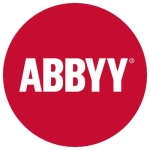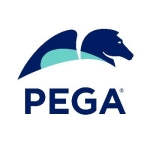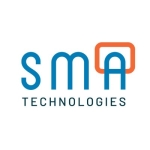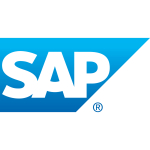What is our primary use case?
My major use case with UiPath is to create automation applications that reduce manual work. At the same time, we use it to record and update our processes.
How has it helped my organization?
UiPath has helped us elevate our automation process and reduce silos in our businesses. We have been able to deliver better results by using UiPath.
UiPath has improved efficiency with its end-to-end automation process. For example, we do data transfer using UiPath automation. Right from the insertion of data to the transfer of data to the end-user, everything is completely automated now. It's very apt as end-to-end automation software. End-to-end automation is very important because there is no manual intervention needed, once it has been set up. A lot of time and a lot of effort has been saved because of end-to-end automation.
Because no manual intervention is needed, 80 percent of our time, overall, is being saved right now. For example, tasks that required around 10 employees to do only require two employees. The remaining eight employees can focus on something else, to improve sales or our product feature list, et cetera. And invariably, overhead costs and employee costs have been drastically reduced with UiPath.
We are using the cloud version of UiPath, and it has definitely helped us to reduce our on-premises footprint. There is absolutely no on-premises maintenance because everything is on the cloud for us. Server updates and the like happen on the cloud. Currently, we just have a couple of systems on-premises for manual work, but apart from that, our on-premises footprint is almost zero.
Another benefit is that UiPath has reduced the cost of digital transformation because it's complete, end-to-end automation software on the cloud. Everything is digital for us now. There is no paperwork or manual intervention needed. Employees who work remotely can get easily connected and download and process data, as well, with UiPath. This digital transformation didn't require expensive or complex application upgrades or IT application support. UiPath is very straightforward software. It's one of the easiest-to-understand RPA platforms. So we have not used any third-party applications or anything else to do our tasks.
We deal with a lot of data and UiPath has definitely reduced human error. Previously, while transferring data, data loss would happen here and there, and that consumed a lot of time. But since the end-to-end automation with UiPath, there are zero errors. It's very useful and has greatly improved our efficiency. We have seen about a 25 percent improvement in overall efficiency since we started using UiPath. It has saved us three hours per day out of an eight-hour workday.
What is most valuable?
The most valuable features for me are the Automation Hub and Studio. I engage with the Studio functionality in UiPath, as that is where most of the design happens. I'm from a non-technical background, so for me, it's very easy to just drag and drop the fields using the Studio functionality and place them in my workflow module. That is my favorite aspect of UiPath.
The option in Studio of the drag-and-drop functionality makes it very easy to design certain applications. One project that I have been working on is building security automation for our organization. For example, if anybody plugs malicious devices into a laptop or our system, a notification pops up. And if somebody logs in to our system from a different account, a notification pops up. It has been very straightforward to do that. It's not rocket science. Just drag and drop and proceed from there.
Also, the user community is fantastic. I just post whatever queries I have on the user community and I get a lot of responses immediately. That has been very helpful for me. It's one of the premium communities out there for any software. I'm enjoying the user community.
What needs improvement?
In terms of the product, I don't have any complaints. Here and there, small server downtime happens, but that is expected with any cloud-based software.
For how long have I used the solution?
I've been using UiPath for about a year.
What do I think about the stability of the solution?
Being cloud software, it's stable. They just need to make sure that it's up to date.
What do I think about the scalability of the solution?
Initially, we started out with 15 users and now we have 25. In that way, it's scalable, but any automation software is scalable.
How are customer service and support?
They could provide much more premium, quicker customer service. I'm from India and the customer support team is elsewhere. There's a time difference and, whenever I post a query or ask them for help, the response is delayed. That is one way they could improve.
In terms of their product knowledge and quality, I'd rate their technical support very highly, but it's their response where they could be much more efficient.
How would you rate customer service and support?
Which solution did I use previously and why did I switch?
Before this, we were actually trying to develop an in-house application ourselves, but things didn't pan out for us. That's why we switched to UiPath. We didn't use any other software.
How was the initial setup?
I was partially involved in the initial setup. I wouldn't say it was complex; it was a smooth process for us. It took around 25 days for us to get it up and running in our organization. We expected the process to go on for two months at least, but that didn't happen. It was quicker.
A couple of our guys, along with two employees from the UiPath team, worked together on the implementation. They gave us initial training on how to go about things.
We are a very small startup company. We have three teams in our organization and the platform is deployed across all three teams.
What was our ROI?
UiPath has resulted in a greater return on investment in terms of profits. We have seen a 20 percent increase in our overall revenue for the last financial year. We have seen a good return on investment from UiPath.
What's my experience with pricing, setup cost, and licensing?
For the features and the quality of features that they provide, it's a very reasonably priced product.
Which other solutions did I evaluate?
We didn't evaluate any other options before going with UiPath because we knew it was one of the market leaders. It was just a matter of whether it fit our budget or not. Luckily, it fit our budget, so we purchased it.
What other advice do I have?
The biggest lesson I've learned from using UiPath so far is that, in the current digital age, automation is everything. Automation is going to be the future. I would definitely urge others to start using at least the Community Edition of UiPath. That is the free edition. Try using that edition first, to get a handle on things, before going for the paid edition.
Which deployment model are you using for this solution?
Public Cloud
Disclosure: PeerSpot contacted the reviewer to collect the review and to validate authenticity. The reviewer was referred by the vendor, but the review is not subject to editing or approval by the vendor.






















Great to hear about your extensive use of UiPath in HR and e-commerce! I agree that Orchestrator and Marketplace are game-changers, but the support response time can indeed be improved. 500 bots in production is impressive—kudos to your team!